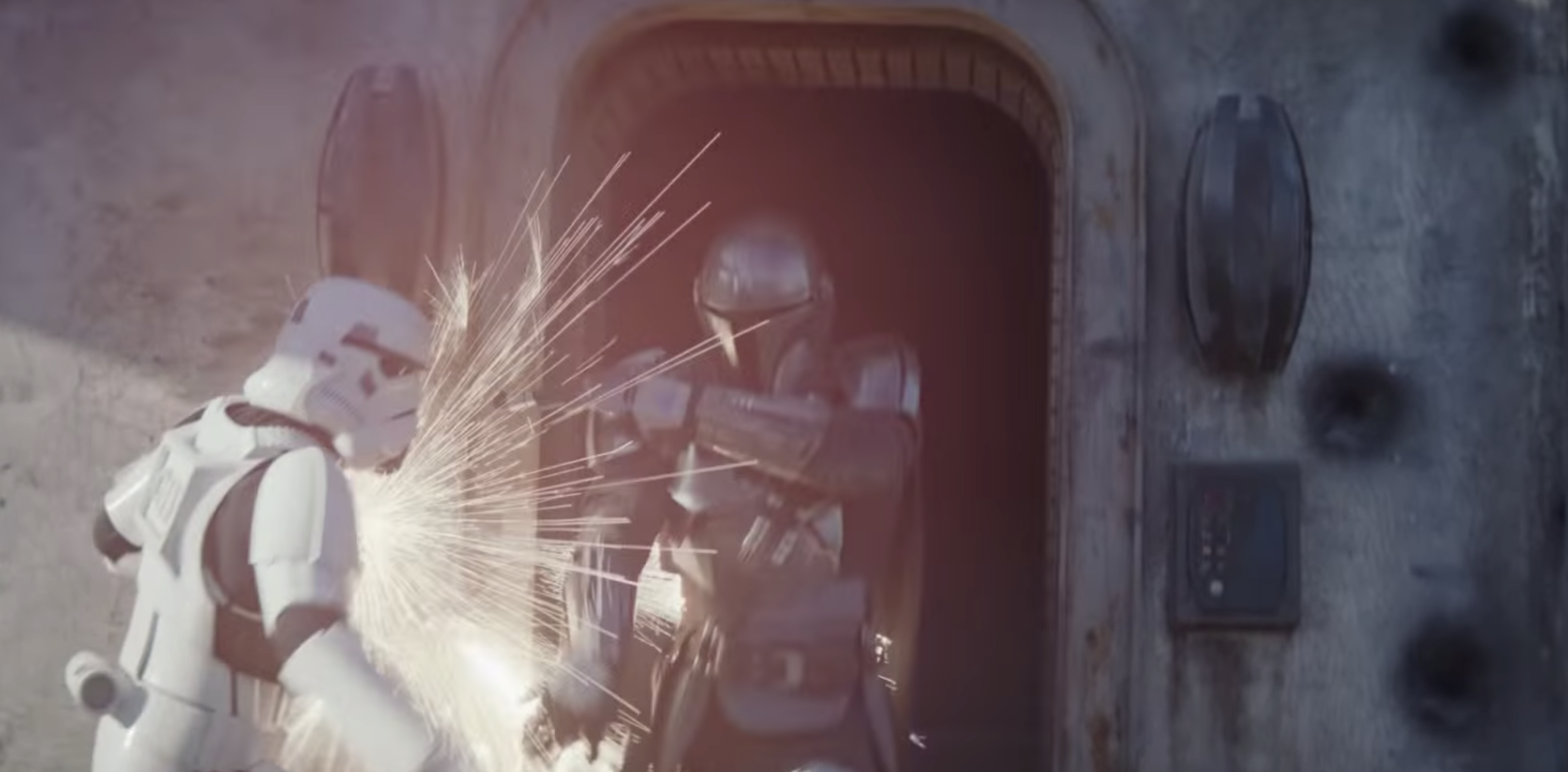‘The Mandalorian’ Is the Future of Star Wars

Credit to Author: Matthew Gault| Date: Tue, 12 Nov 2019 17:45:35 +0000
My parents taught me to enjoy Star Wars. To this day, my mother speaks of the Mos Eisley cantina scene in A New Hope with reverence. The strange aliens built using practical effects, the weird clicks and blurbles of the creatures, the severed arm of Ponda Baba. The cantina scene established the Star Wars universe as something bigger than the Jedi and the Empire. It was a mythological world big enough for smugglers, bastards, and frontier violence. The Mandalorian, Disney’s new live action Star Wars television series, lives in the spaces unoccupied by the Jedi. It thrives in the places the Empire left behind. It’s a show built from pieces first established in the Mos Eisley cantina.
George Lucas based Star Wars, in part, on the serial adventure films he enjoyed as a child. Star Wars exists because he couldn’t get the rights to Flash Gordon. Those original serials ran in 20 minute segments as part of a larger movie reel. Star Wars was always confined by its need to be a big story on the big screen. To justify a two-hour run time, Star Wars films needed to be about a Galactic Empire and the battle between the Dark and Light sides of the force.
The Mandalorian is small—its first episode is just 40 minutes long—and, freed from the constraints of the big screen, it can tell a smaller story. It’s the story of a bounty hunter with no name working for a government functionary known only as The Client. It’s a story where Nick Nolte, Brian Posein, and Taika Waititi deliver commanding performances in a few minutes of screentime without showing their faces.
The show has a visual language that’s instantly recognizable. Its first episode is a western that could, if it didn’t occur a long time ago in a galaxy far far away, be an episode of Gunsmoke. It opens on a stranger walking into a bar. The bar’s resident assholes start to push him around. There’s an explosion of violence and the stranger proves he’s not to be messed with.
The Stranger is a bounty hunter, the Mandalorian. He looks like Boba Fett, but he’s not. Thank the Force. One of the strengths of the The Mandalorian is that it expands Stars Wars, rather than just doubling down on old characters. We never see his face. If he has a name, we don’t learn it. Like Clint Eastwood in A Fistfull of Dollars, he has none. He is a creature of myth, defined by his actions. The armor on his body, with its various scars and dents, tells his story.
Tracking a bounty, the Mandalorian crosses a desert ridge and stares down at a stucco compound that could exist in a Spaghetti Western were it not for the alien desperados wandering its grounds. He meets another bounty hunter wearing bandoliers. There’s a shootout and a gatling gun.
The Mandalorian is Star Wars stripped to its bare, mythic essentials. In 40 minutes, I understood the motivation of the Mandlorian and the greater stakes of the story. Set just after the events of Return of the Jedi, the Mandalorian takes a job from an Empire functionary he may not be able to fulfill I understood that this was Star Wars by way of Sergio Leone with a dash of Lone Wolf and Cub. I understood that Star Wars was a big enough universe to tell stories that weren’t about Space Wizards and galactic politics.
Star Wars became ingrained in our culture because of its extended universe. For decades, creators and fans churned out comic books, novels, video games, and cartoons that explored the worlds beyond the Jedi. There were always more stories to tell, more planets to visit, and more creatures to learn about. The universe was vast and its history deep. Talented writers filled in the world suggested by the Mos Eisley cantina.
The Mandalorian is a high budget realization of what Star Wars can be with the right vision. Disney didn’t just buy the Skywalkers in 2012. It bought the rights to a world where Werner Herzog can send a faceless bounty hunter on a mysterious quest. This December, Disney will release the final Star Wars movie in the Skywalker saga. Bob Iger, Disney’s CEO, has promised to slow down production on Star Wars films.
“Less is more,” Iger said of the films. That doesn’t mean we’ll see less Star Wars, just that we’ll see more Star Wars that looks like The Mandalorian. Sparse, mythic, small stories set in the fringes of the galaxy. That’s a good thing.
This article originally appeared on VICE US.